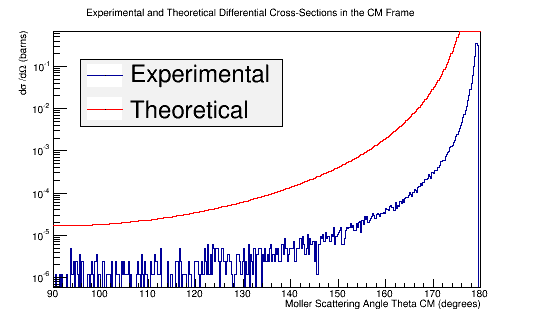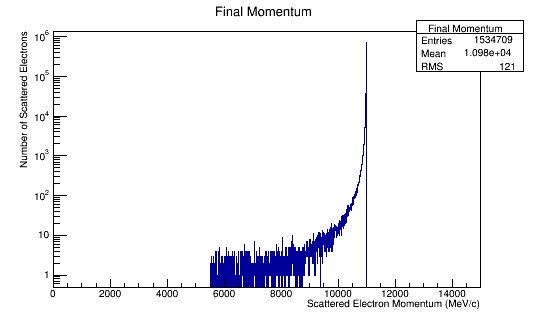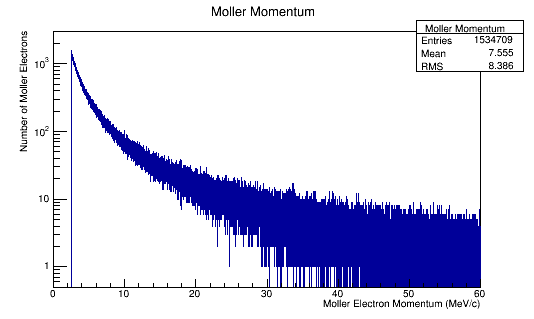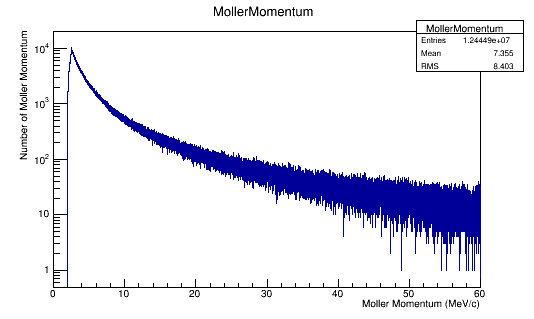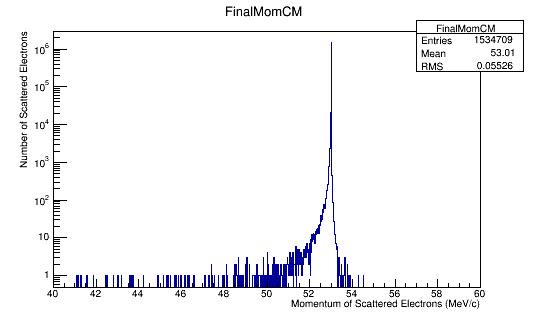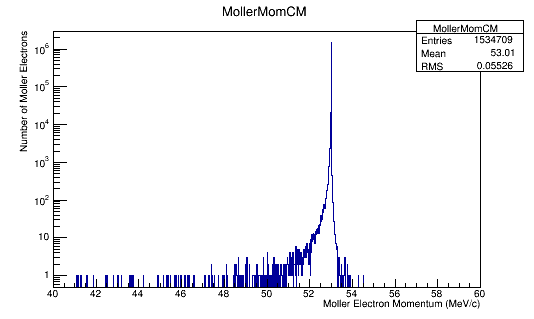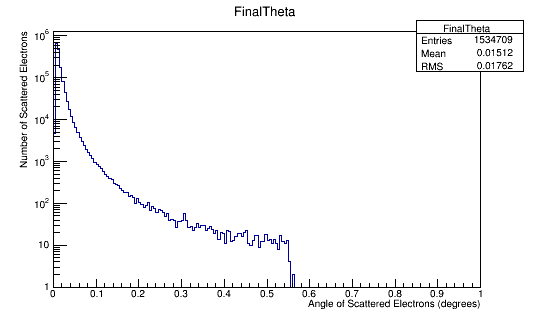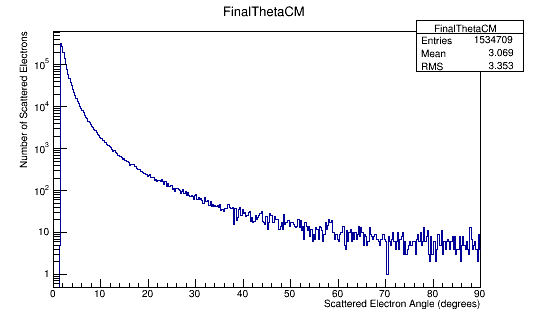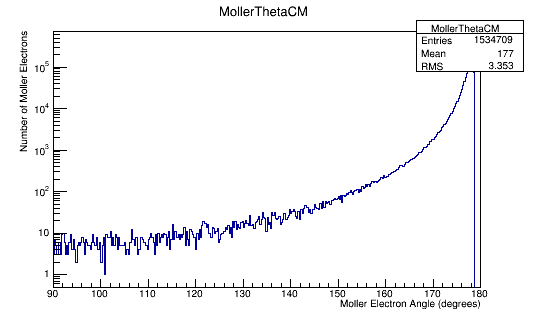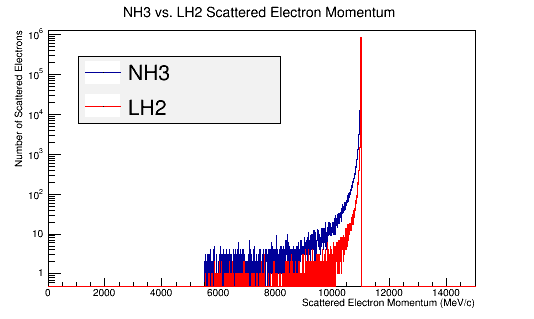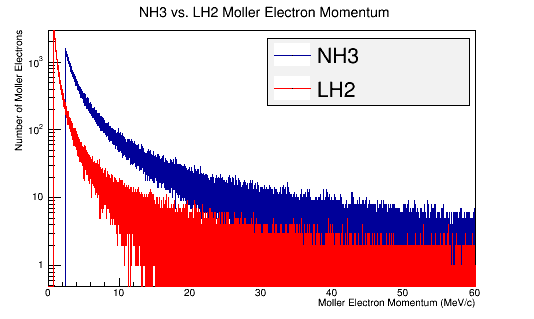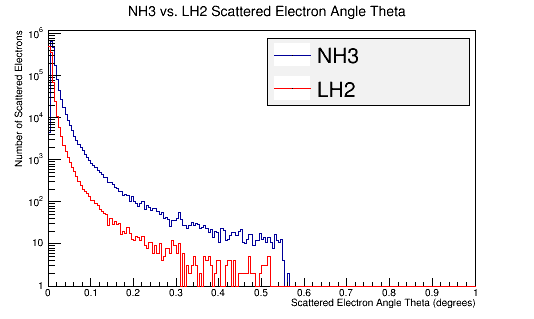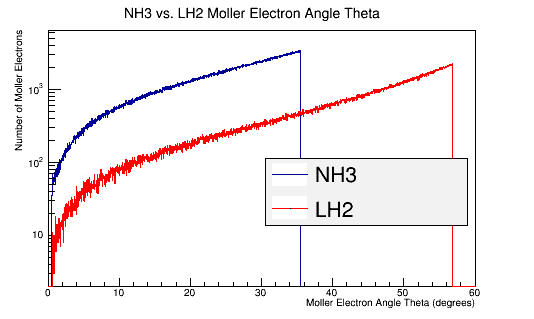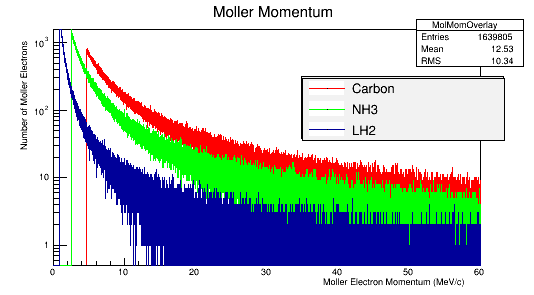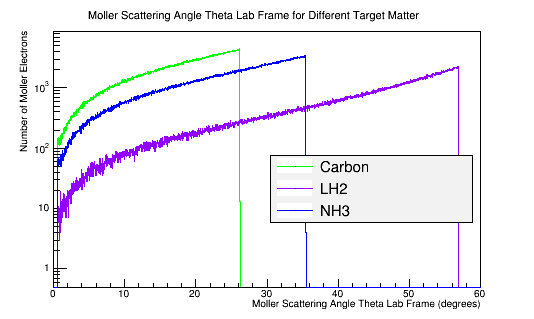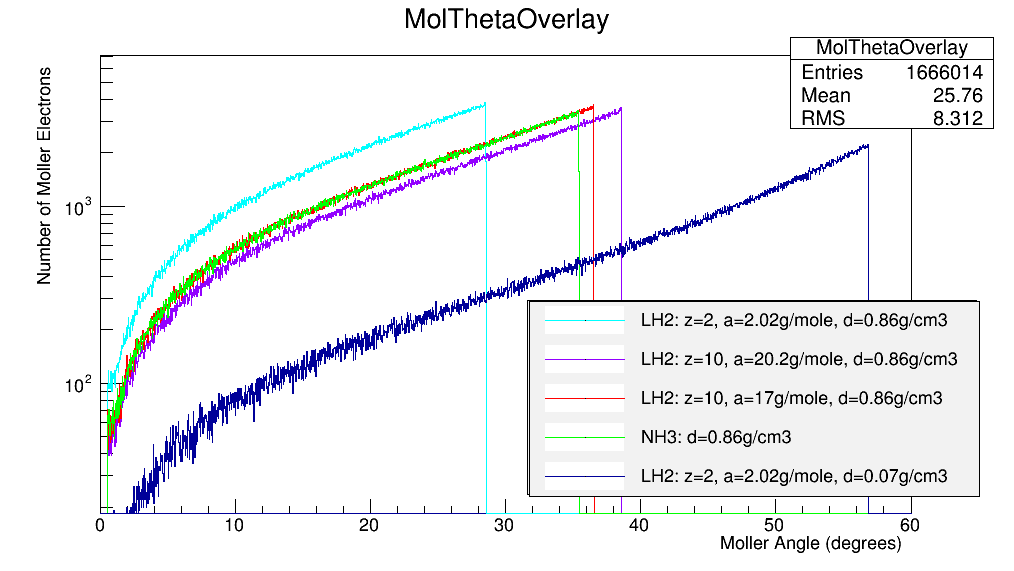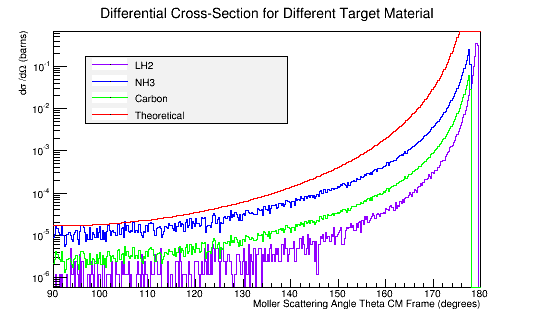Difference between revisions of "DV RunGroupC Moller"
| Line 27: | Line 27: | ||
[[Replacing the LH2 target with an NH3 target]] | [[Replacing the LH2 target with an NH3 target]] | ||
| − | + | [[NH3 Momentum Distribution in the Lab Frame]] | |
[[File:FnlMomNH3.png|frame|center|alt=Scattered Electron Momentum in Lab Frame|'''Figure 6a:''' The scattered electron momentum distribution for 4E7 incident 11 GeV electrons in the Lab frame of reference.]] | [[File:FnlMomNH3.png|frame|center|alt=Scattered Electron Momentum in Lab Frame|'''Figure 6a:''' The scattered electron momentum distribution for 4E7 incident 11 GeV electrons in the Lab frame of reference.]] | ||
| Line 37: | Line 37: | ||
Increasing the number of incident electrons, Moller Momentum now appears as: | Increasing the number of incident electrons, Moller Momentum now appears as: | ||
| − | + | [[NH3 Momentum Distribution in the Center of Mass Frame]] | |
[[File:Full_MolMom.png|frame|center|alt=Moller Electron Momentum in Lab Frame Frame|'''Figure 6c:''' The Moller electron momentum distribution for 4E8 incident 11 GeV electrons in the Lab frame of reference.]] | [[File:Full_MolMom.png|frame|center|alt=Moller Electron Momentum in Lab Frame Frame|'''Figure 6c:''' The Moller electron momentum distribution for 4E8 incident 11 GeV electrons in the Lab frame of reference.]] | ||
| Line 49: | Line 49: | ||
| − | + | [[NH3 Angular Distribution in the Lab Frame]] | |
[[File:FnlThetaNH3.png|frame|center|alt=Moller Electron Scattering Angle Theta in Lab Frame|'''Figure 6f:''' The Moller electron scattering angle thetea distribution for 4E7 incident 11 GeV electrons in the Lab frame of reference.]] | [[File:FnlThetaNH3.png|frame|center|alt=Moller Electron Scattering Angle Theta in Lab Frame|'''Figure 6f:''' The Moller electron scattering angle thetea distribution for 4E7 incident 11 GeV electrons in the Lab frame of reference.]] | ||
| Line 56: | Line 56: | ||
| + | [[NH3 Angular Distribution in the Center of Mass Frame]] | ||
[[File:FnlThetaNH3CM.png|frame|center|alt=Scattered Electron Scattering Angle Theta in Center of Mass Frame|'''Figure 6h:''' The Scattered electron scattering angle theta distribution for 4E7 incident 11 GeV(Lab) electrons in the Center of Mass frame of reference.]] | [[File:FnlThetaNH3CM.png|frame|center|alt=Scattered Electron Scattering Angle Theta in Center of Mass Frame|'''Figure 6h:''' The Scattered electron scattering angle theta distribution for 4E7 incident 11 GeV(Lab) electrons in the Center of Mass frame of reference.]] | ||
Revision as of 23:24, 28 March 2016
need to insert moller shielding into card after moller LUND file is created. (see clas12/beamline)
Simulating the Moller scattering background for EG12
GEANT4 Simulation of Moller Events
Simulation Setup
Determine the Moller background using an LH2 target to check the physics in GEANT4
Distributions For LH2
LH2 Momentum Distribution in the Lab Frame
LH2 Angular Distribution in the Lab Frame
LH2 Momentum Distribution in the Center of Mass Frame
LH2 Angular Distribution in the Center of Mass Frame
Comparing experimental vs. theoretical for Møller differential cross section 11GeV
Change to a NH3 Target
Replacing the LH2 target with an NH3 target
NH3 Momentum Distribution in the Lab Frame
Increasing the number of incident electrons, Moller Momentum now appears as:
NH3 Momentum Distribution in the Center of Mass Frame
NH3 Angular Distribution in the Lab Frame
NH3 Angular Distribution in the Center of Mass Frame
LH2 Vs. NH3
Plotting the Momentum and Scattering angle Theta in the Lab and Center of Mass frame of reference for LH2 and NH3 targets.
Figure out the offset
Rerunning the GEANT simulation for a target of solo atoms of Carbon 12
These graphs show an offset based upon the density of the target material.
Density of target material
C=2.26 g/cm3
NH3=.86g/cm3
LH2=.07g/cm3
The greater the density, the smaller the solid angle into which the Moller electron will scatter.
Density, atomic mass, and electron number effects
Temporarily changing the density of LH2 to be .86g/cm3, the density of NH3, and altering the atomic mass and electron number, we find
Differential Cross-Section Offset
Comparing this to the theoretical differential cross section:
As shown above , we find that the differential cross section scale is
Converting the number of electrons to barns,
where ρtarget is the density of the target material, ltarget is the length of the target, and iscattered is the number of incident particles scattered.
For LH2:
For Carbon:
For Ammonia:
Combing plots in Root:
new TBrowser();
TH1F *LH2=new TH1F("LH2","LH2",360,90,180);
LH2->Add(MollerThetaCM,1.19e-6);
LH2->Draw();
TH1F *C12=new TH1F("C12","C12",360,90,180);
C12->Add(MollerThetaCM,2.21e-7);
C12->Draw();
TH1F *NH3=new TH1F("NH3","NH3",360,90,180);
NH3->Add(MollerThetaCM,8.87e-7);
NH3->Draw();
LH2->Draw("same");
C12->Draw("same");
Theory->Draw("same");
Reconstruction
Moller Track Reconstruction in eg12
Papers used
[1]Farrukh Azfar's Derivation of Moller Scattering
A polarized target for the CLAS detector
An investigation of the spin structure of the proton in deep inelastic scattering of polarized muons on polarized protons
QED Radiative Corrections to Low-Energy Moller and Bhabha Scattering
http://arxiv.org/abs/1602.07609
